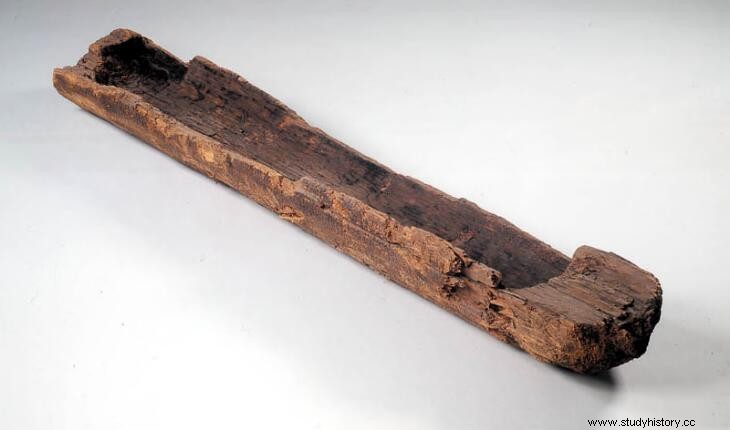In August 1955, the construction work on the A28 motorway between Utrecht and Groningen in the Netherlands, at the height of the town of Pesse (province of Drenthe), passed through a peat bog, an old lagoon where decomposing organic material had accumulated. for centuries.
One of the workers who were removing the peat with bulldozers to make way for the road ran into what he thought was a tree trunk at a depth of about two meters. He pushed it away and didn't give it much importance. But a local farmer named Hendrik Wanders noticed it a few days later, picked it up, and wheeled it over to his house in a wheelbarrow to examine it.
Wanders realized that this was not a simple trunk, so he contacted the University of Groningen, where after examining it, it was found that it was a carved canoe almost 3 meters long (298 centimeters) by 44 centimeters wide. width. The front part narrows on both sides, and the bottom ends in a kind of point that ends in a triangular shape.

Analysis and carbon dating revealed that it had been built during the early Mesolithic, between 8040 and 7510 BC, making it the oldest ship in the world at around 10,000 years old. The interior of the canoe, made of Scots pine, had carving indentations, probably made with flint or horn tools.
To avoid decomposition, since it had remained intact thanks to the absence of oxygen in the peat bog, it was freeze-dried, a freezing and dehydration process that is generally used in the food industry.
For a long time there was no consensus among historians as to whether it was a boat or something else, perhaps an animal feeder.
In April 2001 the archaeologist Jaap Beuker, who argued that at that time humans did not yet have cattle and therefore it could not be a feeder, built an exact reproduction that was successfully rowed by a canoeist, thus proving that it was a canoe. .
Today Pesse's canoe is on display at the Drents Museum in Assen.
